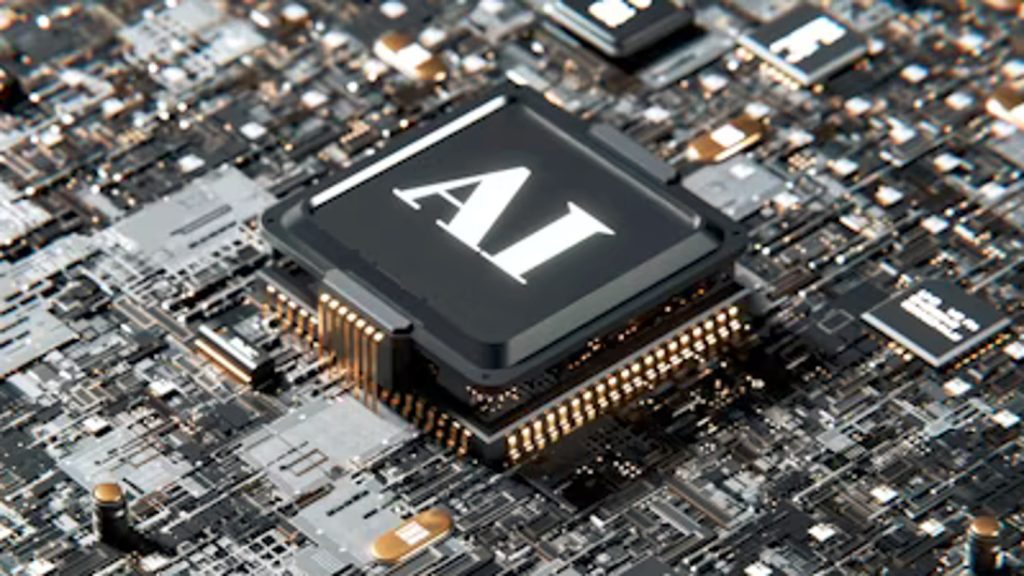With politicians worldwide backing AI, 2025 looks set to be a standout year in the technology’s development. It’s a revolution that will come with major implications for designers and engineers, writes Stephen Holmes
It seems like we’ve spent the early weeks of 2025 waiting for newly elected politicians to settle behind their desks and watching with bated breath for new policies that could prove make-or-break on both sides of the Atlantic Ocean.
With the Oval Office once more stinking of McDonalds and spray tan, the rest of the world, like an overly laboured passenger train, can finally start to pull away from the station, having only some semblance of an idea about the direction in which it’s heading. But one certainty to which we can all cling is that AI will continue to permeate discussions about seemingly every topic under the sun.
With huge sums of money being thrown at data centres and digital initiatives, and politicians around the world standing behind lecterns and extolling AI’s value in shaping the next industrial revolution, I’ve been thinking not about the future, but about the past. Those of you who know me better than simply an awkward headshot at the top of a page will also know that I despise the term ‘Industrial Revolution 4.0’ – or 5.0, or whatever number we’re supposedly up to now.
Many years ago, I studied the ‘OG Industrial Revolution’, the one in which children lost lives and limbs clambering around mines, chimneys and machinery; where entire villages upped and moved continents: and where a Spinning Jenny wasn’t just an adult entertainer bringing allegations against a global leader.
The Industrial Revolution was no overnight success, however quickly history classes flash over it. It was more than just keynotes from Watt, Stephenson, Brunel, Bessemer et al. It was almost two hundred years of emerging technologies constantly ramping up to full steam from all corners of industry.
This revolution shaped the world we live in today, creating new cities, sports, transport, laws, rights and much more that had never existed before.
In just the first weeks of 2025, the business of AI has taken off in a flurry of hype and opinion that makes even the early days of the internet seem underwhelming. The focus, after a period of economic stagnation and a slump in productivity, is on AI catalysing the next paradigm shift in human existence.
The UK government has declared that dedicated ‘AI Growth Zones’ will be created to speed up planning for AI infrastructure. Silicon Valley’s rush to support President Trump in his second term, meanwhile, suggests that the world’s biggest digital companies are positioning themselves for fewer restrictions around AI, leading to the next sprint of evolution.
You all likely know of Elon, Jensen, Jeff and Sam. But this will be the first truly international revolution. Tata’s Natarajan, Toyota’s Koji and Airbus’ Guillaume, as well as a few dozen Chinese CEOs, are just as likely to get a big say. This is not to discount the heads of exciting new brands and tools that have the potential to break through to the masses.
Changing canvas
Like many, I envisage AI impacting everyone’s lives across all facets of society. Just like the Industrial Revolution of stovepipe hats and street urchins, it will form part of a canvas of wider change.
One day, historians will look back upon this period as the wholesale evolution of digital design software, fabrication tools and computer hardware. It’s something that we’re all living through, which feels odd when I consider all the books and literature I’ve had to read regarding previous industrial booms.
For much of this period, I’ve been lucky enough to have had a front seat, covering technology for DEVELOP3D over the past 150 issues and more (you can read them all here, like a time capsule). I arrived just as 3D CAD was taking hold of the industry, just as designers were picking up new visualisation tools, and when rapid prototyping was still carried out by bureaux, not on desktops.
As my conversation with NASA’s Ryan McClelland reminded me, designers and engineers are still only truly getting to grips with GPU-accelerated software, let alone AI. And, as McClelland points out, AI is going to change how designers and engineers interface with CAD. Less pointing and clicking, and more conversations. Suddenly the use of XR headsets becomes more practical and Siemens’ collaboration with Sony begins to show more promise.
The tools used in product development are due an overhaul. Designers and engineers want to be more productive, to design better products, and to take humankind further than it’s been before
Looking at the advances of Onshape, it feels sobering to realise that what the industry still perceives as the new kid on the block was first developed over a decade ago.
The tools used in product development are due an overhaul. Designers and engineers want to be more productive, to design better products and to take humankind further than it’s been before. AI looks like the cornerstone technology to achieve this, and it’s up to us to pick it up and run with it.
So 2025 looks set to be a standout year, one that bored school children will have to memorise in the future as the year when AI finally took root in the tools of industry. It’s going to be an exciting time ahead
This article first appeared in DEVELOP3D Magazine
DEVELOP3D is a publication dedicated to product design + development, from concept to manufacture and the technologies behind it all.
To receive the physical publication or digital issue free, as well as exclusive news and offers, subscribe to DEVELOP3D Magazine here






